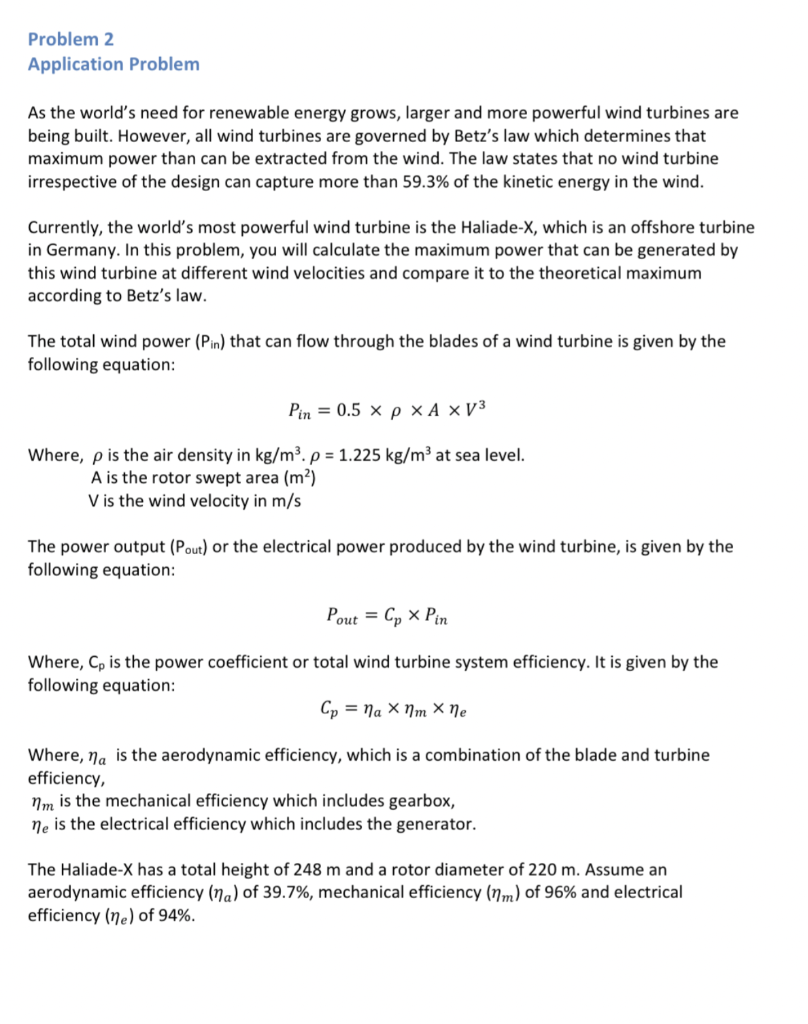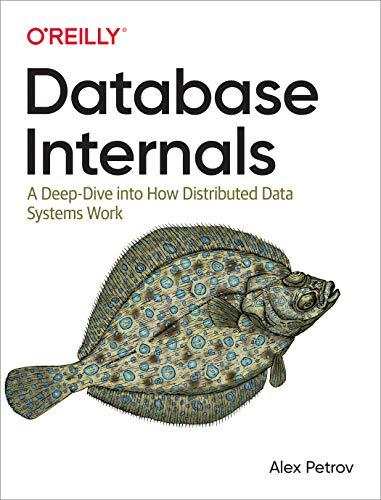Answered step by step
Verified Expert Solution
Question
1 Approved Answer
All work should be done in MATLAB Problem 2 Application Problem As the world's need for renewable energy grows, larger and more powerful wind turbines


All work should be done in MATLAB
Problem 2 Application Problem As the world's need for renewable energy grows, larger and more powerful wind turbines are being built. However, all wind turbines are governed by Betz's law which determines that maximum power than can be extracted from the wind. The law states that no wind turbine irrespective of the design can capture more than 59.3% of the kinetic energy in the wind. Currently, the world's most powerful wind turbine is the Haliade- X, which is an offshore turbine in Germany. In this problem, you will calculate the maximum power that can be generated by this wind turbine at different wind velocities and compare it to the theoretical maximum according to Betz's law. The total wind power (Pin) that can flow through the blades of a wind turbine is given by the following equation: Pin=0.5AV3 Where, is the air density in kg/m3.=1.225kg/m3 at sea level. A is the rotor swept area (m2) V is the wind velocity in m/s The power output ( Pout ) or the electrical power produced by the wind turbine, is given by the following equation: Pout=CpPin Where, Cp is the power coefficient or total wind turbine system efficiency. It is given by the following equation: Cp=ame Where, a is the aerodynamic efficiency, which is a combination of the blade and turbine efficiency, m is the mechanical efficiency which includes gearbox, e is the electrical efficiency which includes the generator. The Haliade- X has a total height of 248m and a rotor diameter of 220m. Assume an aerodynamic efficiency (a) of 39.7%, mechanical efficiency (m) of 96% and electrical efficiency (e) of 94%. 1. Create a vector of the observed output power (PObservedout) of the Haliade- X turbine for wind velocities from 0m/s to 20m/s in intervals of 1m/s. The size of the resultant vector will be 121. The unit of power is Watts. 2. Calculate the theoretical maximum output power (PTMOut) if the Power Coefficient or overall system efficiency (Cp) was 0.593, which is the theoretical maximum according to Betz's law for wind velocities from 0m/s to 20m/s in intervals of 1m/s. The size of the resultant vector will be 121. The unit of power is in Watts. 3. What is the percentage difference between the observed output power of the Haliade- X turbine and the theoretical maximum output power at the above-mentioned wind velocities? The calculated percentage difference will be a 121 vector. A general formula for Percentage Difference is shown below: PercentageDifference=PObservedoutPTMOutPObservedout100 4. After completing all three parts above, display all three answers at a wind speed of 12 m/s using fprintf () statements. The display format should be as follows (the X.XX and the units should be replaced with the calculated values and units): At a wind velocity of 12m/s the results for the Haliade-X turbine are as follows : The output power generated is X.XX units The theoretical maximum output power that can be generated according to Betz's law is X.XX units The percentage difference between the output power generated and the theoretical maximum output power is X.XX . Note - 1. By looking at the vectors created in Parts 1,2 and 3 in the MATLAB workspace you can confirm that a wind speed of 12m/sec corresponds to the 13th element of the vectors. You can access the 13th element of a particular vector Vec as follows: Vec(13) 2. The calculated values should not be hardcoded when displayed using fprintf() SourcesStep by Step Solution
There are 3 Steps involved in it
Step: 1

Get Instant Access to Expert-Tailored Solutions
See step-by-step solutions with expert insights and AI powered tools for academic success
Step: 2

Step: 3

Ace Your Homework with AI
Get the answers you need in no time with our AI-driven, step-by-step assistance
Get Started


